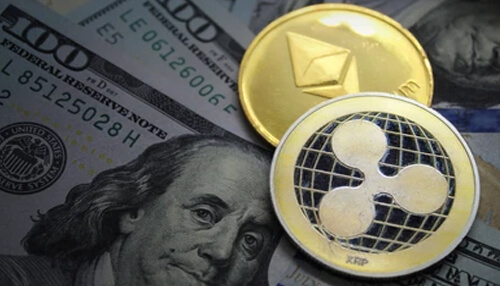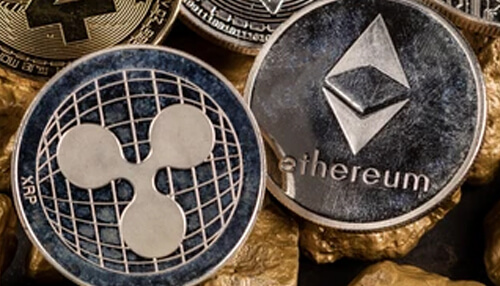Bitcoin, the “king of cryptocurrency”, introduced us to digital assets in 2009. But did you ever wonder what the most significant cryptocurrencies, other than Bitcoin, are? The answer can be different for different crypto investors or analysts, but it is certainly Ethereum & Ripple for us. The former makes it easier for developers to create dApps using smart contracts, while the latter makes cross-border financial transfers easier, faster, and affordable.
But what would you choose if you had to choose one from the two? Continue reading if you want to know the answer. We’ve listed down the comparison between the two to help you choose the right investment.
What’s the Difference Between Ripple and Ethereum?
Now you know what Ethereum and Ripple are all about. Both cryptos can be used as payment platforms and as native currencies, so there are many similarities. If you still haven’t decided which crypto is better, it’s time for us to look at their differences.
Ethereum vs. Ripple: Key Differences
Speed
Ripple was created to speed up transactions between global companies. Ripple payments are incredibly fast. It can process more than 1000 transactions in one second. This is approximately 1,000 times faster than a Bitcoin transaction and also 1,000 times cheaper.
Ripple is currently much faster than Ethereum, which ultimately affects the ETH to INR values. Ethereum can process only 15 transactions per second. It might not seem like a long wait to get your funds. It is especially true if you are used to waiting days for a fiat transaction to appear in your bank account. These extra seconds can mean that Ethereum exchange rates will be much higher than those on Ripple, and it is also much less efficient.
But, this could be changing. The highly anticipated launch of Ethereum 2.0 could change our views about crypto. It will see Ethereum technology migrate to a new platform.
Eth2, the shiny new Ethereum platform, will be able to process far more transactions than its predecessor. It will make it more efficient in terms of energy. Each Ethereum transaction currently consumes 22.65 kWh energy. This is a better option than Bitcoin, which uses almost the same amount of power as an American household to process every transaction. It severely limits Ethereum’s speed- and capacity.
Many investors have jumped at the opportunity to purchase Ethereum before its launch, with Phase 0 of Eth2 scheduled soon. The upgrade could cause a spike in interest, which could positively impact the price.
Supply
Ripple and Ethereum have a key difference in the available amount of each cryptocurrency. The answer to the question “How many Ripple coins do you have?” is 100 billion XRP. CoinMarketCap reports that there are currently 46,878,114.887 XRP in circulation.
Ethereum has an unlimited supply of Ether. CoinMarketCap reports that the circulating supply of Ethereum is 117,934,043.12 ETC. It means that there are far fewer Ether tokens available than XRP.
The company tightly controls the Ripple supply because XRP cannot be mined in the same way as Ether. It significantly impacts the XRP price, XRP to INR conversion, and demand. Investor concerns are stopped by the company holding 55 billion XRP in an encrypted account. This makes it easier to track the total amount of XRP in circulation.
Consensus Mechanism
Ripple and Ethereum have very different systems. These algorithms are called consensus mechanisms. Although it may sound complex, a consensus mechanism simply refers to the rules that enable blockchain systems to perform certain processes.
To add blocks to the Ethereum blockchain, cryptocurrency miners must compete with each other to solve complex mathematical equations using their computers. This requires enormous amounts of power and is the reason why Ethereum is so slow. The consensus mechanism that Ethereum uses is called a Proof-of-Work (PoW) algorithm.
Ripple uses a consensus mechanism known as a Federated Byzantine Agreement (FBA). It may sound complicated. FBA connects each node (a server connected to the Ripple network) to a limited number of nodes. Each group of nodes will overlap so that each node is connected.
A set number of nodes must validate each transaction before it can be added to the blockchain. This makes the technology extremely secure and fast.
Ripple’s FBA system is currently more efficient than Ethereum’s PoW. However, Ethereum 2.0 could make everything more efficient.0
Eth2 will see Ethereum move from a Proof-of-Work (PoWto a Proof-of-Stake (PoS) consensus system. A Proof-of-Stake (PoS) mechanism asks its users to “stake” a percentage of their cryptocurrency funds to validate every transaction. A validator is someone who has ‘locked up’ a certain amount Ether as a stake.
Ethereum will close the gap between Ripple’s technology and its own by adopting a system that relies on cryptocurrency validators instead of miners.
Now that you know about the fundamental differences between the two, you’re better positioned to make an informed investment decision.



